-
 Bitcoin
Bitcoin $107,965.5977
-1.49% -
 Ethereum
Ethereum $2,537.2130
-1.84% -
 Tether USDt
Tether USDt $1.0000
-0.01% -
 XRP
XRP $2.2608
-0.71% -
 BNB
BNB $659.3980
-0.36% -
 Solana
Solana $148.7394
-2.41% -
 USDC
USDC $1.0000
0.01% -
 TRON
TRON $0.2873
-0.36% -
 Dogecoin
Dogecoin $0.1679
-4.64% -
 Cardano
Cardano $0.5763
-2.71% -
 Hyperliquid
Hyperliquid $37.4767
-6.61% -
 Bitcoin Cash
Bitcoin Cash $496.1888
-0.42% -
 Sui
Sui $2.8545
-3.01% -
 Chainlink
Chainlink $13.2532
-2.61% -
 UNUS SED LEO
UNUS SED LEO $9.0537
0.09% -
 Stellar
Stellar $0.2467
-2.27% -
 Avalanche
Avalanche $17.8240
-3.64% -
 Shiba Inu
Shiba Inu $0.0...01160
-2.60% -
 Toncoin
Toncoin $2.7443
-3.31% -
 Hedera
Hedera $0.1560
-2.71% -
 Litecoin
Litecoin $85.9596
-2.27% -
 Monero
Monero $315.7623
-2.23% -
 Dai
Dai $1.0000
-0.01% -
 Polkadot
Polkadot $3.3513
-2.20% -
 Ethena USDe
Ethena USDe $1.0001
0.03% -
 Bitget Token
Bitget Token $4.2992
-3.24% -
 Uniswap
Uniswap $7.3735
-1.54% -
 Aave
Aave $278.5274
-3.41% -
 Pepe
Pepe $0.0...09849
-3.52% -
 Pi
Pi $0.4560
-3.35%
What is the transfer fee of USDT?
2025/03/23 02:14
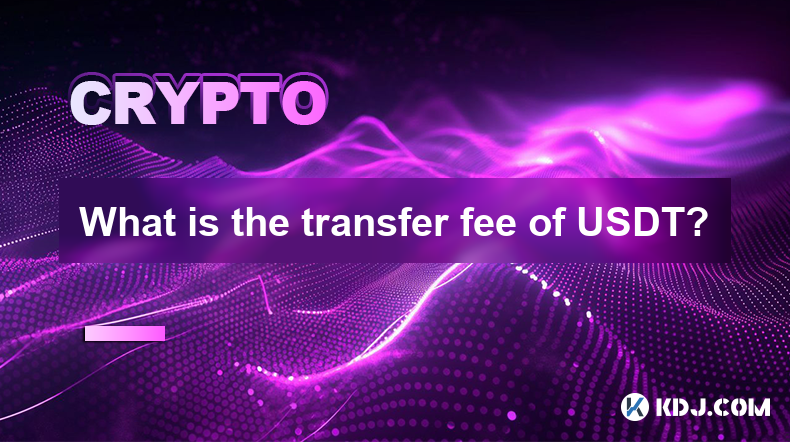
Key Points:
- USDT transfer fees vary significantly depending on the network used (e.g., Ethereum, TRON, Omni).
- Fees are typically denominated in the native cryptocurrency of the chosen network (e.g., ETH, TRX, BTC).
- Several factors influence the exact fee, including network congestion and the chosen transaction speed.
- Exchanges and wallets often add their own fees on top of the network fees.
- Understanding these fee structures is crucial for cost-effective USDT transfers.
What is the transfer fee of USDT?
The cost of transferring Tether (USDT) isn't a fixed amount. It fluctuates based on several crucial factors, primarily the blockchain network used for the transaction. USDT exists on multiple blockchains, each with its own fee structure. The most common networks include Ethereum (ERC-20), TRON (TRC-20), and Omni (on Bitcoin). Each network has different transaction costs and speeds.
Network Fees:
- Ethereum (ERC-20): Ethereum's gas fees, which are paid in ETH, are notorious for their volatility. High network activity leads to significantly higher gas fees. This means transferring USDT via ERC-20 can be expensive, especially during periods of intense network congestion. The fee is dynamic and changes constantly.
- TRON (TRC-20): TRON generally offers much lower transaction fees compared to Ethereum. Fees are paid in TRX, and they tend to be significantly more stable and predictable than Ethereum's gas fees. This makes TRC-20 USDT transfers a more budget-friendly option.
- Omni (on Bitcoin): USDT on the Omni Layer uses the Bitcoin blockchain. Fees are paid in Bitcoin (BTC) and are typically moderate, falling somewhere between TRON and Ethereum in terms of cost. However, Bitcoin transaction confirmation times can be slower than TRON or even Ethereum, depending on network conditions.
Factors Affecting USDT Transfer Fees:
Beyond the base network fees, several additional factors can influence the final cost:
- Network Congestion: High network traffic increases demand for block space, driving up transaction fees across all networks. This is particularly true for Ethereum.
- Transaction Speed: Users can often choose a faster transaction speed, which typically results in higher fees. Slower transactions usually mean lower fees. This is a common trade-off across all networks.
- Exchange/Wallet Fees: Many cryptocurrency exchanges and wallets add their own fees on top of the network fees. These fees can vary widely depending on the platform. Always check the fee structure before initiating a transfer.
- Transaction Size: While less significant for USDT transfers than for some other cryptocurrencies, exceptionally large transactions might incur slightly higher fees.
Step-by-Step Guide to Understanding USDT Transfer Fees (Illustrative Example):
Let's say you're transferring USDT from one exchange to another.
- Step 1: Choose your network: Decide whether to use ERC-20, TRC-20, or Omni. Consider the fee structure and transaction speed of each.
- Step 2: Check the exchange's fee structure: Before initiating the transfer, check your sending and receiving exchange's fee schedules. They might charge a percentage-based fee or a flat fee.
- Step 3: Observe current network fees: Many exchanges and wallets display estimated network fees before you confirm the transaction. Pay close attention to these estimates.
- Step 4: Confirm the transaction: Once you've reviewed all fees, confirm the transfer. The actual fee might vary slightly from the estimate due to fluctuating network conditions.
Common Questions:
Q: Which network is cheapest for USDT transfers?
A: Generally, TRON (TRC-20) offers the lowest transaction fees. However, this can vary depending on network congestion at the time of the transaction.
Q: Are there any hidden fees when transferring USDT?
A: While the network fees are usually transparent, exchanges and wallets may add their own fees. Always check the fee structure before transferring.
Q: How can I minimize USDT transfer fees?
A: Choose the TRC-20 network when possible, transfer during periods of low network congestion, and select slower transaction speeds (if available) to reduce fees.
Q: What happens if I don't have enough cryptocurrency to cover the network fees?
A: Your transaction will fail. Ensure you have sufficient funds in your chosen network's cryptocurrency (ETH, TRX, or BTC) to cover both the network fees and any potential exchange/wallet fees.
Q: Can I predict the exact USDT transfer fee beforehand?
A: No, the exact fee is difficult to predict with complete accuracy due to the dynamic nature of network fees. However, estimates are usually provided before you confirm the transaction.
부인 성명:info@kdj.com
제공된 정보는 거래 조언이 아닙니다. kdj.com은 이 기사에 제공된 정보를 기반으로 이루어진 투자에 대해 어떠한 책임도 지지 않습니다. 암호화폐는 변동성이 매우 높으므로 철저한 조사 후 신중하게 투자하는 것이 좋습니다!
본 웹사이트에 사용된 내용이 귀하의 저작권을 침해한다고 판단되는 경우, 즉시 당사(info@kdj.com)로 연락주시면 즉시 삭제하도록 하겠습니다.
- Coinbase (Coin) IPO 플래시백 : 랠리가 과도하게 확장 되었습니까?
- 2025-07-08 22:50:12
- Toonie Trouble : 전문가처럼 가짜를 발견합니다
- 2025-07-08 22:50:12
- 밈 동전, 초기 투자, 포물선 성장 : 파도 잡기
- 2025-07-08 22:30:12
- 암호화, 기관, BTC & ETH : 새로운 시대 새벽
- 2025-07-08 22:30:12
- Bitcoin Solaris Market Launch: A New Dawn or Just Another Altcoin?
- 2025-07-08 20:30:12
- Bitcoin, Memecoin Mania, and the All-Time High Hunt: What's Next?
- 2025-07-08 20:30:12
관련 지식
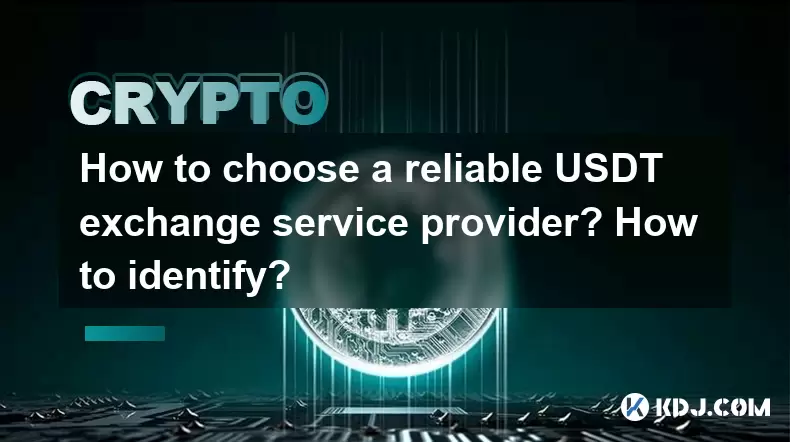
How to choose a reliable USDT exchange service provider? How to identify?
2025-06-12 15:15:01
<h3>Understanding the Role of USDT in Cryptocurrency Trading</h3><p>USDT (Tether) is one of the most widely used stablecoins in the ...
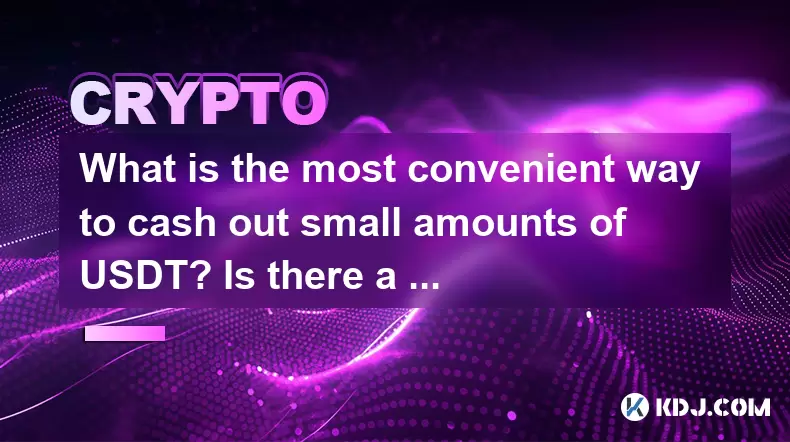
What is the most convenient way to cash out small amounts of USDT? Is there a shortcut?
2025-06-11 23:00:43
<h3>Understanding the Need to Cash Out Small USDT Amounts</h3><p>Cashing out small amounts of USDT can be a challenge for many crypt...
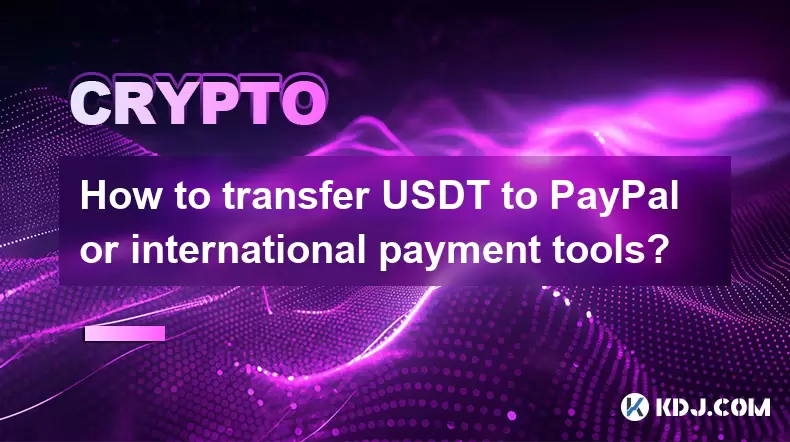
How to transfer USDT to PayPal or international payment tools?
2025-06-15 05:28:19
<h3>Understanding the Basics of USDT and PayPal Integration</h3><p>USDT (Tether) is a stablecoin pegged to the US dollar, offering b...
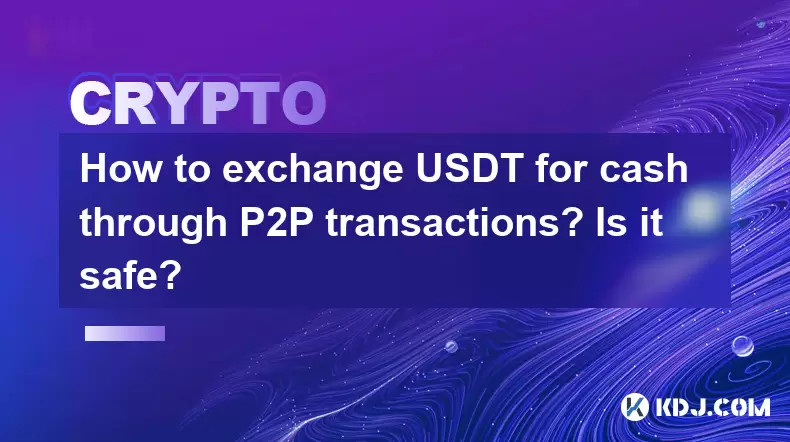
How to exchange USDT for cash through P2P transactions? Is it safe?
2025-06-18 07:56:41
<h3>Understanding USDT and P2P Transactions</h3><p>Tether (USDT) is a stablecoin pegged to the value of the US dollar, making it a p...
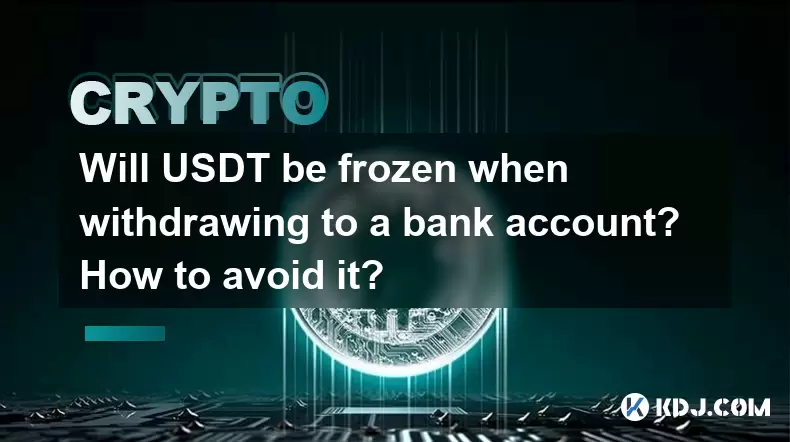
Will USDT be frozen when withdrawing to a bank account? How to avoid it?
2025-06-15 10:03:05
<h3>Understanding USDT Withdrawals and Bank Account Freezing Risks</h3><p>When users decide to withdraw USDT (Tether) to a bank acco...

How to avoid risks when exchanging USDT for cash? What are the pitfalls?
2025-06-11 20:14:27
<h3>Understanding the Risks of Exchanging USDT for Cash</h3><p>When exchanging USDT (Tether) for cash, users must be aware of the po...

How to choose a reliable USDT exchange service provider? How to identify?
2025-06-12 15:15:01
<h3>Understanding the Role of USDT in Cryptocurrency Trading</h3><p>USDT (Tether) is one of the most widely used stablecoins in the ...

What is the most convenient way to cash out small amounts of USDT? Is there a shortcut?
2025-06-11 23:00:43
<h3>Understanding the Need to Cash Out Small USDT Amounts</h3><p>Cashing out small amounts of USDT can be a challenge for many crypt...

How to transfer USDT to PayPal or international payment tools?
2025-06-15 05:28:19
<h3>Understanding the Basics of USDT and PayPal Integration</h3><p>USDT (Tether) is a stablecoin pegged to the US dollar, offering b...

How to exchange USDT for cash through P2P transactions? Is it safe?
2025-06-18 07:56:41
<h3>Understanding USDT and P2P Transactions</h3><p>Tether (USDT) is a stablecoin pegged to the value of the US dollar, making it a p...

Will USDT be frozen when withdrawing to a bank account? How to avoid it?
2025-06-15 10:03:05
<h3>Understanding USDT Withdrawals and Bank Account Freezing Risks</h3><p>When users decide to withdraw USDT (Tether) to a bank acco...

How to avoid risks when exchanging USDT for cash? What are the pitfalls?
2025-06-11 20:14:27
<h3>Understanding the Risks of Exchanging USDT for Cash</h3><p>When exchanging USDT (Tether) for cash, users must be aware of the po...
모든 기사 보기

























































































